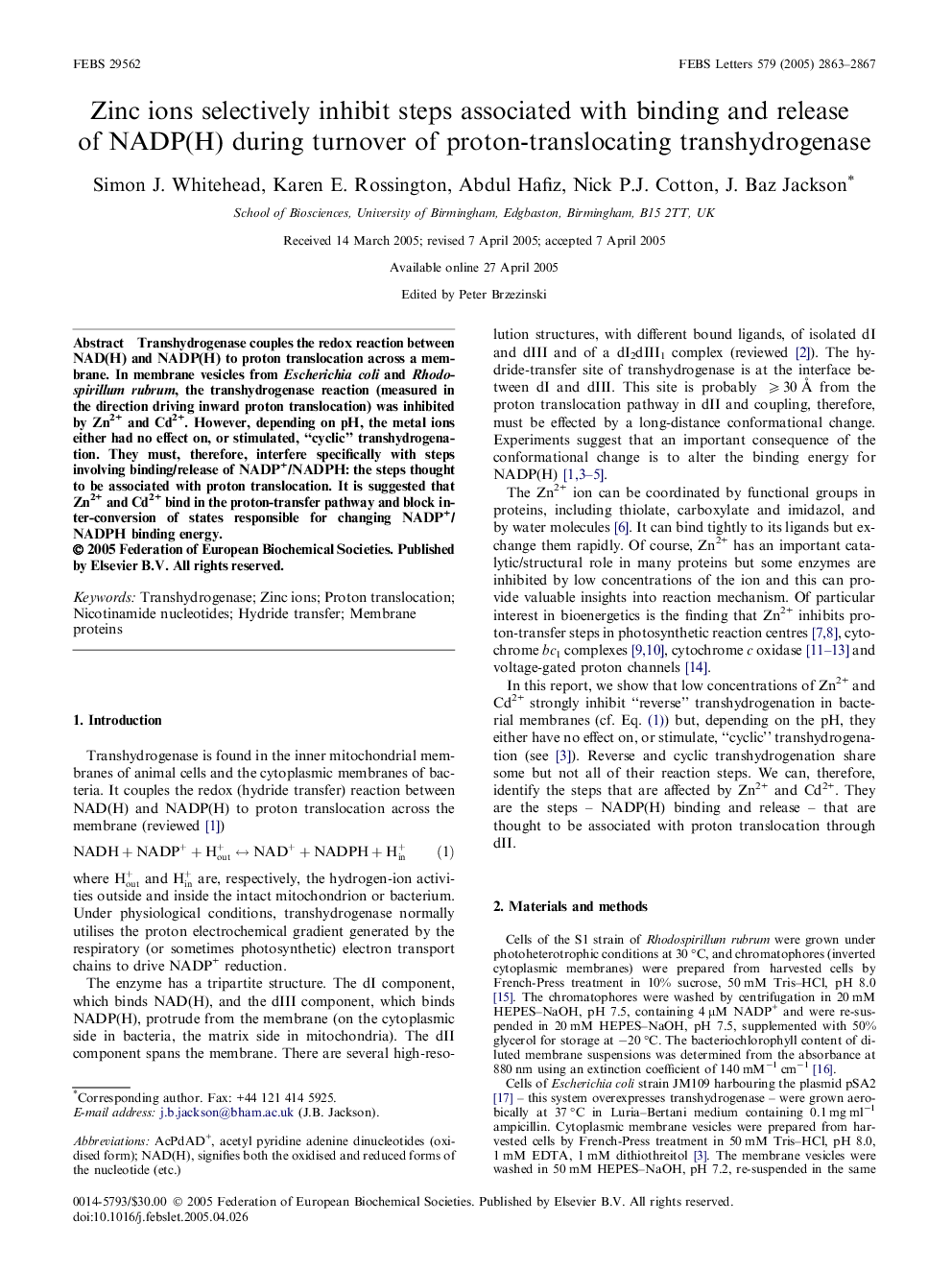| Article ID | Journal | Published Year | Pages | File Type |
|---|---|---|---|---|
| 2051421 | FEBS Letters | 2005 | 5 Pages |
Abstract
Transhydrogenase couples the redox reaction between NAD(H) and NADP(H) to proton translocation across a membrane. In membrane vesicles from Escherichia coli and Rhodospirillum rubrum, the transhydrogenase reaction (measured in the direction driving inward proton translocation) was inhibited by Zn2+ and Cd2+. However, depending on pH, the metal ions either had no effect on, or stimulated, “cyclic” transhydrogenation. They must, therefore, interfere specifically with steps involving binding/release of NADP+/NADPH: the steps thought to be associated with proton translocation. It is suggested that Zn2+ and Cd2+ bind in the proton-transfer pathway and block inter-conversion of states responsible for changing NADP+/NADPH binding energy.
Related Topics
Life Sciences
Agricultural and Biological Sciences
Plant Science
Authors
Simon J. Whitehead, Karen E. Rossington, Abdul Hafiz, Nick P.J. Cotton, J. Baz Jackson,
